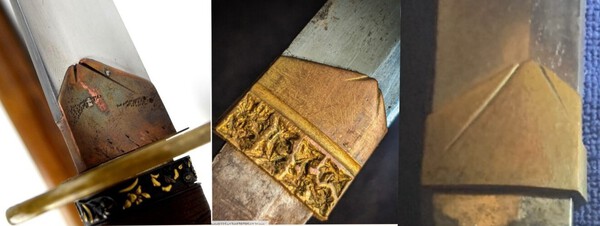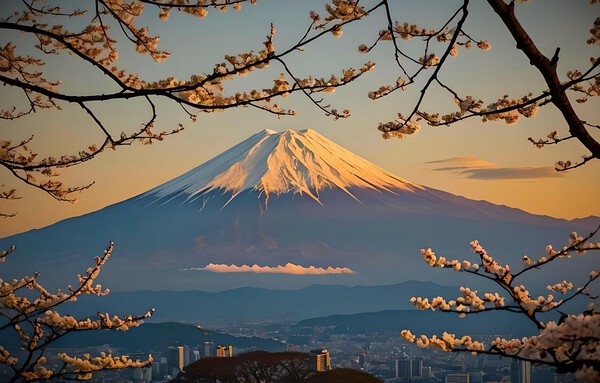-
Posts
13,719 -
Joined
-
Last visited
-
Days Won
167
Content Type
Profiles
Forums
Events
Store
Downloads
Gallery
Everything posted by Bruce Pennington
-
Wow, Sam, wonder why the ito was cut away like that? Also, I've only seen maybe one other gunto with the haikan worn this much. Guy must have worn it every day and done a lot of walking!
-
-

Advice for new collectors from an old dog
Bruce Pennington replied to R_P's topic in General Nihonto Related Discussion
Reminds me of this one: "Learn from the mistakes of others. You don't have time, in life, to make them all yourself." Ha! I think I keep trying to make them all myself! -
Unlike the other metal fittings, the sarute have an amazing amount of variations and variety.
-
The Edit function is diabolically hidden in those 3 dots in the upper right corner of your post. Click on it and you'll get choices, one of which is Edit. However there is a time limit that, once expired, the edit is no longer available. Like they said above, at that point just PM a Moderator and ask for a delete.
-
Dee got me searching Ohmura's site, and sure enough, he's got a Minatogawa with clasped hands sarute:
-
WOW! That is gorgeous! Thanks for posting.
-
Who would that be sitting next to him? Is it a small boy?
-
Good one, Thomas! I've added this to the Stamps doc.
-
Dang, good observation Marvin!
-
Hi Nicholas, The Type 8/19 and Kyugunto have a variety of stamps that we have no reference for. I believe them to be shop stamps or logo of the manufacturers. The only known one we see is the Suya Shoten stamp in that location. The rest, like yours are unknown.
-
This is the liner of a gunto for sale HERE for an outlandish amount of money (35,000 Pounds). They say the liner states the sword was made for "LT.-GEN. MASAHARU HOMMA (THE BEAST OF BATAAN)". Thoughts? The blade is pretty lame, if you ask me. But .... They don't show the nakago.
-
"OH THE HUMANITY!!!"
-
Had to post this seppa cut from black lacquered ray skin! I regularly hear about folks making seppa from leather, but this is a first.
-
Dang. Thanks Ray!
-
-
Another Mt Fuji habaki showed up and I thought it would be interesting to see the 3 I have on file together. Wondering why they all have the same two crevasses. Seemingly identical depiction of the mountain. Here is the only photo I could find showing more detail of the mountain, and I can see 3 points at the top. So, that must be what they are depicting.
-

Help translating Mei on gunto
Bruce Pennington replied to CNS_44's topic in Military Swords of Japan
Yes, the fittings look original. A good number of swords get pitting and stains at the end. It's most likely from water that got into the saya, causing corrosion. It was a known problem, back then. A couple of mods were created in an effort to keep water and dirt out. The early Police sabers changed latching mechanisms and the Army gunto tried the flip latch throat cover and the dust proof seppa. The Rinji seishiki (Type 3) usually came with the dust proof seppa: Obviously, they weren't always successful. -

Shin Gunto Japanese Sword - real?
Bruce Pennington replied to Susana Ferreira's topic in Military Swords of Japan
I have several of these, from this particular faker, on file with the exact same serial number. They used other numbers, too, but this one was their favorite number for some reason. So sorry, Susana. -

Help translating Mei on gunto
Bruce Pennington replied to CNS_44's topic in Military Swords of Japan
Chansen, I checked my files and have what appears to be two Nobumitsu. One has a long mei and his blades are Showa and large Seki stamped. I think he is this one: NOBUMITSU (信光), Shōwa (昭和, 1926-1989), Fukuoka – “Chikushū-jū Sa Nobumitsu kinsaku” (筑州住左信光 謹作, “carefully made by Sa Nobumitsu from Chikuzen province”), real name Koyama Nobumitsu (小山信光), he was born on the 26th day of the second month Meiji six (明治, 1873) and studied under Fukuoka-Ishidō Koretoshi (是利), he lived in Chikuzen´s Ito (怡土), kihin-jōi (Akihide), Special Honor Seat at the 6th Shinsaku Nihontō Denrankai (新作日本刀展覧会, 1941) (see picture right) The other. like yours, used 2 kanji mei, usually with a large gap between them. His blades are all '44 & '45 made, and are Gifu & Na stamped. This is likely your guy: NOBUMITSU (信光), Shōwa (昭和, 1926-1989), Gifu – “Nobumitsu” (信光), real name Sakō Shin´ichi (佐光信一), born June 24th 1905, student of Kojima Katsumasa (小島勝正), he worked as guntō smith and died July 21st 1993, ryōkō no retsu (Akihide) Could I get a clear shot of that stamp at the top. It's likely a Gifu stamp. -

Show Us Your High Class Gunto
Bruce Pennington replied to lonely panet's topic in Military Swords of Japan
Akira followed up, after I posted this, and also felt the kana's meaning on the blade might be different. Your idea sounds more logical, with it being on a star stamped blade. Mystery continues. -

Show Us Your High Class Gunto
Bruce Pennington replied to lonely panet's topic in Military Swords of Japan
@Kiipu @BANGBANGSAN A recent discussion of the Toku stamp on a helmet on this Warrelics thread: Helmet Type 90, sheds light on the meaning of the stamp. Quoting Akira Komiya: "The letter “特” indicates “特別採用”, special acceptance, meaning it did not pass the ordinary inspection criteria but was nonetheless accepted for special reasons." As you read through the thread, he says he could not find specific criteria for failure to pass nor acceptable reasons for allowing the item through for use. Apparantly, this had been explained much earlier in a pinned thread of Nick Komiya's discussing helmets. -

Tsuka re-wrapping
Bruce Pennington replied to bloodycarrots's topic in General Nihonto Related Discussion
This guy just popped into my radar screen, but I don't know anything about him or his work. Might be worth checking. @Scogg might know more about him. -
This may be true for nihoto collectors, but there are many who would appreciate that sword and likely would pay something in that price range for it. It seems shorter. Is it a waki (cutting edge less than 24")?
-
Ken, Good job removing the tsuka. Pretty easy, right? Since you didn't show the other side of the nakago, I assume there was no date. The larger Seki stamp was used by the quality control inspectors of the Seki Cutlery Manufacturers Association, a civilian trade group asked to weed out poorer quality blades from hurting the market's reputation. We see the stamps on blades made in 1940 - 1944, but most of them were made in 1942. So, you have a general idea of the age of your sword. You can read up on the kaigunto on this site: Navy Officers Sword - Ohmura Care and cleaning info: Japanese Sword Care - Japaneseswordindex.com







.thumb.jpg.72455afeac4e234ad809a059d4aefa44.jpg)
.thumb.jpg.d557b0bbc8746187ce6b5ceaf8ab0c36.jpg)








